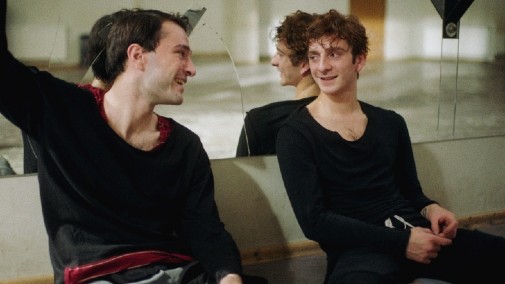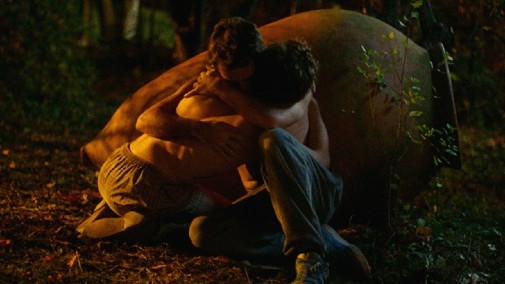
A man is a monument of strength, hard and unbending. A woman is a vision of purity, soft and willowy. For those who teach Georgian traditional dance, this binary is tantamount to a universal truth whose cosmic certainty must be supported by the choreographed bodies. But binaries are conventions fated to be broken by the messiness of being human. Merab, the protagonist of Levan Akin's And Then We Danced, is the element of humanity that breaks the convention and exposes its brittle frailty.
Merab's too soft to be a monument. He's too willowy to be the man of folkloric tradition. He's still a man, though, and a dancer too, one that trains to be part of the National Georgian Ensemble...
His body, sculpted into perfect musculature, refuses to bend to the demands of tradition, striving for a form of self-expression more attuned with its personal identity. And so, he struggles. And as with all dancers, he makes the struggle into a litany of choreographies, those performed for audiences and those performed more internally.

The dance of tradition and modernity is the focus. This dance moves to the tune of the world outside, its rhythm defined both by the slow pace of history and the feverish step of progress. Everyday Merab goes through the motions of this choreography, training in the art of ancient eras while exploring desires that, for many of his countrymen, represent the vices of modern time.
Enter Irakli, a new student in class who finally gives Merab a reason to perform desire for an audience of one. This outsider is like an inverted reflection of Merab. He's the monument that Merab can't be, with the loose confidence that the perfectionist protagonist can't fake. In a way, Merab wants to be Irakli but he also wants him, achingly so. Such wants are expressed in a ballet of averted gazes and casual touches, taunting flexes and seductive shows of erotic need. It's a pas de deux of the most dangerous kind since both men must dance for each other while keeping the spectacle invisible to those around them.
The world says this particular permutation of the dance of desire is forbidden. It says it with locker room jeers and violent rumors, cruel jokes and the like. Of course, when the world demands you don't dance, your foot will begin tapping away regardless. And Then We Danced tells the tale of this song, this rebellion born out of oppression and a need to be faithful to who we really are. The film thus takes the shape of an awakening that blooms from the inside until it reaches the outer world, exposing its transgressive colors for all to see.

If you wish that awakening to be painless you're destined for disappointment. No matter its beauty or its triumphant passages, Levan Akin's film never indulges in delusions of romantic perfection. Like humanity itself in all its convention-breaking glory, this is a messy tale. It fits and starts along the way, stopping for a dream of sexual fulfillment and then falling into a nightmare of rejection, losing the thread on a mournful wedding until it shines bright with an audition scene for the ages.
And Then We Danced is risky and unyielding, simultaneously chained by narrative formulas and always happy to buck their norm. Some unexpected scenes of brotherly conflict, for example, show us there's another dance being performed along the way, one about fraternal masculinity whose conclusion is never reached. The dances all mix and intermesh, making for what could be a chaotic experience if not for the elegant form of Akin's filmmaking, that's able to make a nuptial party into a procession of broken hearts, and the achievements of accomplished actors.
Levan Gelbakhiani plays Merab in a full-bodied performance, where the tension of shoulders and the turn of the neck can tell us more than a dozen monologues ever could. Even when he's standing still, some part of him is dancing for us, be it his wandering eyes or the line of a smile somersaulting into a grimace. He's also dancing with the camera and the audience. Akin shoots his leading man as if his body was a landscape of endless aesthetic possibilities, shifting focus making immobile limbs swivel between fuzziness and razor-sharp definition. In a film of many dances, it's only appropriate for the camera itself to be part of the show.

And Then We Danced, which takes place entirely in Georgia, was Sweden’s submission this last season for Best International Film Oscar. It's now playing in select US cities.